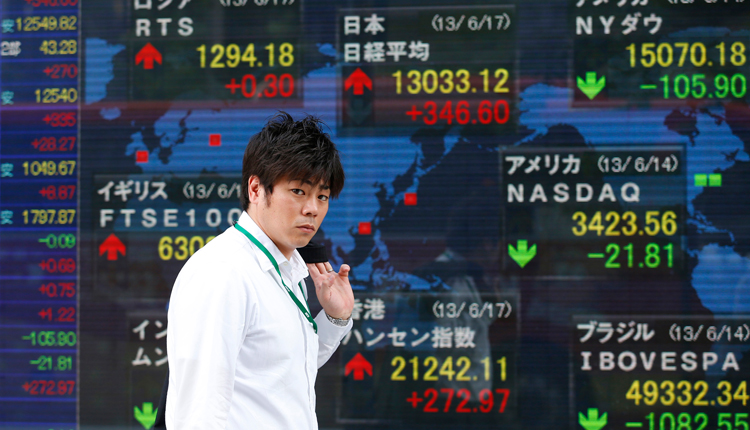Asian markets were higher at midday on Tuesday following yet another day of record highs on Wall Street as the U.S. and Mexico announced a new trade agreement.
The Nikkei 225 was in positive territory during midday trade, up by 0.41 percent, with the country’s shipping sector rising 2.53 percent. South Korea’s Kospi was also in positive territory as it traded higher by 0.27 percent, with industry heavyweight Samsung Electronics rising 0.54 percent.
The ASX 200, meanwhile, traded up by 0.62 percent as the market Down Under continued its recovery from last week’s political turmoil. Vitamin maker Blackmores’ stock was up by 8.84 percent after the company earlier reported a 18.6 percent rise in its full-year profit.
Over in the Greater China markets, Hong Kong’s Hang Seng index lost some of its earlier gains, but still traded up by 0.24 percent. Mainland Chinese stocks, meanwhile, traded in relatively cautious territory: Both the Shanghai composite and Shenzhen composite were largely flat at midday.
Overnight, stocks on Wall Street moved higher. The S&P 500 gained 0.8 percent to close at 2,896.74 — yet another record high. The Nasdaq Composite also ended the trading day stateside up by 0.9 percent to an all-time high of 8,017.90. The Dow Jones Industrial Average was up by 259.29 points to close at 26,049.64.
On Monday, the United States and Mexico announced that a deal had been agreed upon after months of negotiations between the two countries over the future of the North American Free Trade Agreement.
The new deal, which President Donald Trump has said would be called The United States-Mexico Trade Agreement, is expected to last 16 years and will be reviewed every six years pending its approval by Congress, according to U.S. Trade Representative Robert Lighthizer.
Although not currently a part of the announced deal, Ottawa is likely to be an eventual party to the agreement, according to former Canadian trade negotiator Debra Steger.
Speaking with CNBC’s “Street Signs,” Steger said Trump’s comments on the deal were “smoke and mirrors” as the U.S. president actually “only has legal authority from Congress to renegotiate the NAFTA at this point in time,” rather than the bilateral agreement which was announced.
Still, some economists said the announcement was taken positively by markets.
“Risk sentiment was given a further leg up overnight with the news that the US and Mexico had agreed on a trade deal to replace NAFTA,” David de Garis, a senior economist at the National Australia Bank, said in a morning note, adding that “sticking points over the automotive sector have been resolved.”
Other economists, however, warned that the U.S.-Mexico trade deal may not bode well for America’s ongoing trade spat with China.
“Far from ushering in a more reasonable attitude to free trade generally, it is safer to view this latest deal as one that the US has managed to bash into shape by sheer negotiating muscle,” economists Robert Carnell and Prakash Sakpal of ING Asia Pacific said in a note.
“So as far as China and Asia are concerned, this new Mexico deal solves nothing. Indeed, it strengthens the US position to play hard-ball with China. This doesn’t look good for the region,” they added.
The U.S. dollar index, which tracks the greenback against a basket of currencies, stood at 94.863 as of 12:29 p.m. HK/SIN after falling to an intraday low of 94.677 earlier in the Asian trading day.
The Japanese yen slid against the dollar at 111.26 and the Australian dollar traded down at $0.7329 at 12:31 p.m. HK/SIN.
In other currency news, China’s central bank lifted its official yuan midpoint by the most in nearly 15 months to 6.8052 per dollar. Investors are carefully eyeing the Chinese currency in light of a recent policy change from the People’s Bank of China.
Oil prices lost their earlier gains to trade flat in midday Asian trade. Global benchmark brent crude traded at $76.20 per barrel while U.S. West Texas Intermediate crude futures was at $68.84 per barrel.
Source: CNBC
